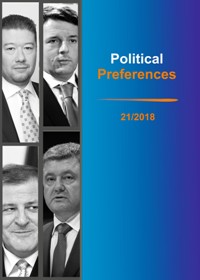

The quality of life is an interdisciplinary issue. Hence, in Polish social sciences there are many different definitions for this term, which has its consequences in research. Nowadays, the topic of life quality is being analyzed through its objective and subjective indexes. The article presents results of various research on mass media usage in the context of spending free time and using modern information and communication technologies (ICT), since both these trends have dominated the field of analyzing objective and subjective dimension of life quality of Poles when it comes to using media. Unfortunately, using mass media is not regarded in research as one of the main indexes for life quality and its full utilization requires a correction of meaning and methodology.
Download files
Citation rules

No. 21 (2018)
Published: 2018-12-31
 10.31261/polpre
10.31261/polpre